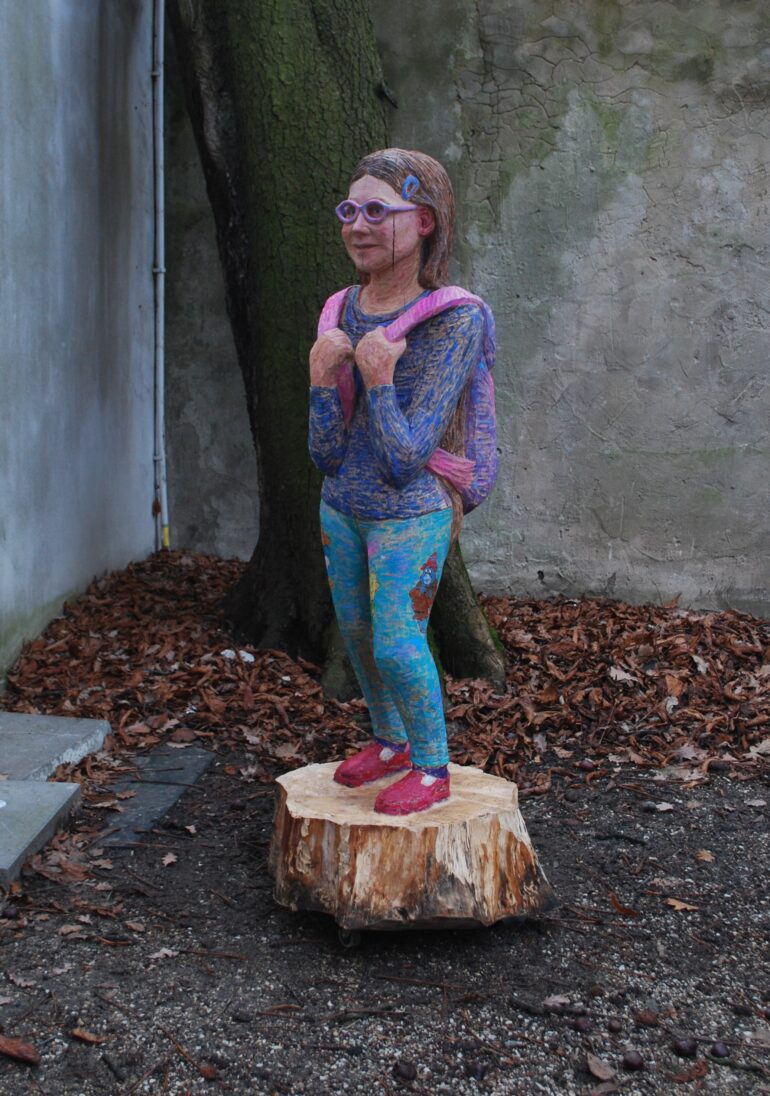

February 9, 2024
Opening: 9 February, 6 pm
Exhibition on view through 16 March
curator: Martyna Stołpiec
We enter Martyna Baranowicz’s solo exhibition with a sculpture of a girl returning from school with a school bag. The sculpture is a collaboration between Baranowicz and her older sister, sculptress Wiktoria Baranowicz.
Stepping into the gallery, we enter the world of a child, socially defined as a “girl” and raised at the turn of the 1990s and 2000s. Being a girl is the artist’s reminiscence from over twenty years ago. Martyna Baranowicz tries to capture the specific moment of “becoming” a person of a specific gender. Even before her first menstruation, before she symbolically entered the customarily defined path “toward femininity,” Baranowicz independently conducted an investigation into what it means to be a woman. She was a little detective who observed the culture around her very closely: the gestures of princesses in fairy tales, the emancipation of heroines in novels, the words or silence of women in films, humorous sayings of adults, or the outfit of the weatherwoman on TV. Returning now to these observations, she seeks to formulate a hybrid recipe for her own gender identity.
At the exhibition, we look at the forces of “nature” and “culture” that influence the growth of an individual. As can be seen in one of the pictures, the girl is an eight-year-old paintress who subconsciously understands the importance of the visual messages surrounding her and sees the possibility of transforming them into her own art, i.e. her individual gaze.
We experience the main part of the exhibition while being inside the “base,” where we can discover traces of the little paintress’s presence in the form of representations from fairy tales popular during her childhood. Human and non-human heroines of animations and children’s novels tangle and mix their own threads to bring to the surface various models of identity formation. We can find here, among others, Sailor Moon in love, Cinderella doing unpaid reproductive work, Bugs Bunny in drag, and Alice growing to a size that gives her the strength to mock the unjust justice system.
However, the girl’s base is not so tight that she cannot see what is outside. The gaps let the outside world inside, connecting different dimensions of reality. Fantasies and aspirations collide with everyday life, which is subject to social or economic status.
Fot. Michał Rybacki